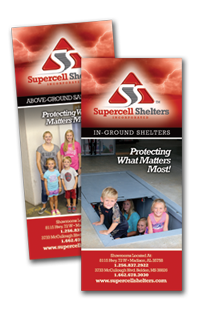5 Dangerous Tornado Safety Myths
Tornado, twister, cyclone—whatever you call these massive storms, they’re never good news. Tornadoes cause tragic deaths and property damage every year in the United States, and with so much conflicting news and word-of-mouth information about them, it might be difficult to sort out fact from fiction.
But believing myths about tornadoes can be dangerous or even fatal. Learn the truth about these five common tornado myths—it could save your life.
Myth 1: Overpasses Are the Safest Place to Be During a Tornado
This myth took root when, in 1991, a camera crew survived a tornado by taking shelter underneath an overpass in El Dorado, Kansas. However, several lucky factors kept the crew unharmed, including the unusual design of the overpass.
As a rule, an overpass offers little protection during a storm—you may as well be standing out in the open. The safest place for you to be during a tornado is an underground shelter. If you find yourself in danger of a tornado while out driving, abandon your car and take shelter in a ditch.
Myth 2: You’ll Have Plenty of Warning Before the Storm
Tornadoes usually strike quickly, without much warning. You may have heard false reassurances that tornadoes only happen when there’s hail or when there are other telltale warning signs of a tornado. However, tornadoes can occur during otherwise pleasant weather. Don’t depend on external warning signs to warn you of a tornado. Instead, make sure you have an NOAA or SAME weather radio in your house at all times. These radios will immediately warn you of the chances of a tornado in your county, giving you time to take shelter.
Myth 3: Residential Shelters are a Waste of Money
If you think that in-ground or above-ground storm shelters are too expensive or an all-around scam, please think again. We wouldn’t be in business if we didn’t know that storm shelters save hundreds of lives each year. Our shelters are certified by professional engineers and meet Texas Wind Tech Institute standards for withstanding high winds and debris impact, and come with features that ensure your safety and convenience.
Your safety is our priority, which is why we offer low starting prices and financing plans. Many of our customers are shocked by how affordable our shelters are. At Supercell Shelters, affordable protection is within your reach so that you can be safer, faster.
Myth 4: Mobile Homes Are Safe During A Tornado
Don’t believe this killer myth! An unanchored mobile home is a dangerous place to be during a tornado. According to the Texas Tech Wind Institute, 42 people died in vehicles or mobile residences during the Central Florida tornadoes of 1998, and two-thirds of deaths during the March 2012 tornadoes in Kentucky and Indiana occurred in mobile homes.
If you live in a mobile home, make sure your home has some kind of anchor. Concrete foundations are the best, but anchoring with rods and chains in another option. The course of action that we recommend is to install “an Above Ground Safe Room tornado shelter” instead of underground. If you have a covered concrete patio or garage, we can install our underground shelters. Most mobile homes have to go with safe rooms.
Myth 5: Open the Windows Before the Storm Hits
You may have heard that when a tornado approaches, you should open the ground-floor windows to equalize wind pressure and prevent the house from “exploding.” However, this is a dangerous myth with little scientific basis.
Though houses may appear to “explode” when hit by a tornado, the supposed burst is just an optical illusion caused by winds violently hitting the house. Opening the windows has no effect on whether the tornado will damage your house and may, in fact, increase the risk of damage from flying debris. When a tornado hits, your time is better spent finding shelter than opening windows. However, do install storm shutters over your windows to protect them from breaking during a storm.
When you are threatened by a tornado, be prepared. Arm yourself with the correct information about tornado safety and make sure that you and your family have a shelter that you can get to quickly. For more information, visit the Supercell Shelters website.


